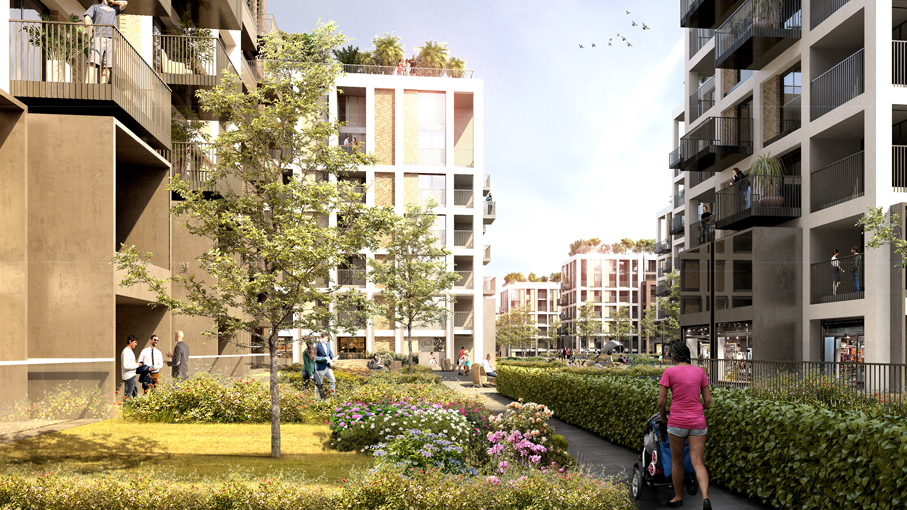Post
JOURNAL 2021 | Debunking Density and Disease - cities are our best defence against future pandemics
2 Aug 2021
You can find out more about this year's Journal here. Or join the Society for just £10 and get receive a free copy.
Urban density is not to blame for the pandemic’s spread and we should weaponise it to fight future contagion argues Earle Arney, Founder & Chief Executive of Arney Fender Katsalides
London’s population density is often cited as a critical point of vulnerability during the pandemic, and a catalyst in the rising ‘R’ (Covid reproduction) number. But I think density is widely misunderstood and often a ‘catch-all’ for a much broader range of urban problems. A high density does not make the capital predestined to become the epicentre of an epidemic. Instead, the data suggest that well-planned density can improve cities’ ability to cope with epidemics through economies of scale, and access to the higher-grade amenities and green spaces that a critical mass of citizens demands.
You only need look to Dickensian London to understand why density is unfairly linked to poor health. The Industrial Revolution caused London’s population to explode from 1 million in 1800, to 4.5 million by 1880 making the capital the largest and richest city in the world. However, the social consequences were terrible, with overcrowding, squalor, poor sanitation and constant outbreaks of cholera and other diseases. Through reform and much-needed improvements in infrastructure, sanitation, healthcare and education, the worst aspects of Victorian life were banished, but London’s population density remained high.
Urban density does not have to equate to epidemic vulnerability. In fact, the opposite is possible. At the World Bank a team led by Dr Sameh Wahba investigated 284 Chinese cities to examine whether there was a link between Covid-19 and urban density. It found that the commonly associated connection was unfounded and he argued that higher densities can even be a blessing rather than a curse in fighting epidemics. Due to economies of scale, cities often need to meet a certain threshold of population density to offer higher-grade facilities and services to their residents in order to help protect against the transmission of disease. Similarly, data for New York City illustrated that in some urban areas, Covid-19 cases were disproportionate to urban density. Specifically Manhattan, the most populous borough of New York City, had fewer cases of Covid-19 compared to the less densely populated outer suburban boroughs of Queens and Staten Island.
So if density isn’t to blame, what makes one city more vulnerable than the next?
It’s simple – poverty. London, to its great shame, still has shocking rates of urban poverty throughout its boroughs – higher than any other region in the UK according to London’s Poverty Profile. The pandemic’s disproportionate effect on the urban poor is also linked to housing quality, where higher death rates from Covid-19 were found in areas where the housing need is the most acute and overcrowding rife.
Housing and health must go hand in hand for our cities to prosper. Poor quality housing and vulnerability to infectious diseases is not solely a question of density done poorly, but how we make our cities an equitable place for all. We should channel what we have learnt during the pandemic to drive reform and make London as healthy and green as it can be.
Firstly, we must tackle the housing issue. Affordable housing targets should not be lowered as some argue. Rather, we should just get on and deliver much-needed homes - at a good level of density and at an increased rate. We need to ‘press reset’ as the current approach is broken. To drive that reset, Special Development Authorities should be established, much like the Olympic Delivery Authority employed to deliver mass housing within a compressed time period – something we have otherwise been incapable of since the post-war period. These new Special Development Authorities should be empowered as consent bodies to deliver homes across GLA-defined Brownfield Sites, Opportunity Areas and Housing Zones. Density will help balance the development economics and offset the provision of well-designed, affordable homes.
These homes must be made more adaptable and able to support homeworking, with associated qualitative measures such as good acoustics and privacy for shared occupants. This would be particularly achievable in build-to-rent as a fresh and evolving typology. Most adaptations of this type can be achieved with minimal uplift in floor area and with no increase in the extent of external walling.
Finally, new green spaces must be created for London and the quality and accessibility of existing green areas, including the greenbelt, elevated. What better legacy of the pandemic than a healthy green revival of London? I envisage a new, improved density that allows our city a more concentrated mix of culture and creativity, all with intrinsic epidemic resilience facilitated by good design.
Earle Arney is Founder & Chief Executive of Arney Fender Katsalides. He holds a Master of Architecture from Harvard University and is an architect, urbanist, and an office and tall building specialist. His practice works internationally from their London and Toronto studios.
